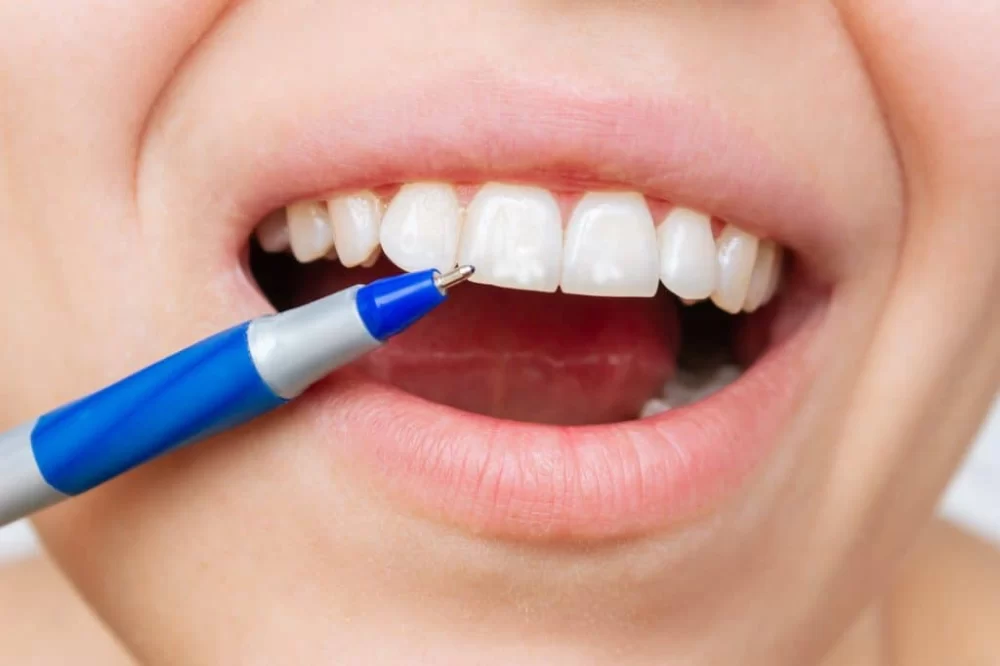
- Understanding-White-Patches-in-Mouth
- Common-Causes-Behind-White-Patches
- Effective-Treatment-Options-for-White-Patches
- Real-World-Cases-and-Professional-Recommendations
- How-Dentistry-Toothtruth-Supports-Your-Oral-Health-Needs
1. Understanding White Patches in the Mouth: What They Are and Why They Matter
White patches appearing in the mouth can be unsettling, raising concerns about their cause and potential health risks. These oral white patches may present on the tongue, inner cheeks, gums, or roof of the mouth, often varying in size and texture. Understanding what these patches represent is crucial for timely and effective treatment.
White patches can range from harmless irritation to signs of more serious conditions such as infections or precancerous lesions. Identifying the nature of the patch is essential to prevent complications and maintain oral health.
1.1 Characteristics and Symptoms
Typically, white patches in the mouth may feel rough or slightly raised. Some may cause discomfort or pain, while others remain asymptomatic. Observing accompanying symptoms—such as redness, swelling, or bleeding—can provide clues to the underlying issue.
1.2 When to Seek Medical Attention
If white patches persist for more than two weeks, change in appearance, or cause pain, professional evaluation is strongly advised. Early diagnosis improves outcomes, especially if the patches are related to infections or precancerous conditions.
2. Common Causes Behind White Patches in the Mouth
There are multiple causes of white patches in the mouth, each requiring different approaches to treatment. Recognizing these causes aids in selecting the most effective remedy.
2.1 Oral Thrush (Candidiasis)
One of the most common causes, oral thrush is a fungal infection caused by Candida species. It often appears as creamy white patches that can be wiped off, sometimes leaving red, irritated areas underneath. Factors such as weakened immunity, antibiotic use, or diabetes can predispose individuals to thrush.
2.2 Leukoplakia
Leukoplakia manifests as thickened white patches that cannot be scraped off and may indicate a precancerous condition. It’s often linked to tobacco use or chronic irritation. Regular monitoring and biopsy may be necessary to rule out malignancy.
2.3 Lichen Planus
This chronic inflammatory condition results in white, lace-like patches, usually accompanied by soreness or burning sensations. Though benign, it requires management to control symptoms and prevent progression.
2.4 Other Causes
Mechanical irritation (such as biting or ill-fitting dentures), allergic reactions, and nutritional deficiencies may also cause white patches. Identifying the exact cause through professional diagnosis is critical.
3. Effective Treatment Options for White Patches in the Mouth
Treatment depends on the cause of the white patches. Here we explore targeted approaches to managing and resolving these oral health issues.
3.1 Antifungal Therapies for Oral Thrush
Oral thrush is treated with antifungal medications, either topical (mouth rinses, lozenges) or systemic, depending on severity. Maintaining good oral hygiene and controlling underlying conditions such as diabetes are equally important.
3.2 Monitoring and Managing Leukoplakia
Since leukoplakia may carry cancer risk, cessation of tobacco or alcohol use is crucial. Dentists may recommend biopsy and regular follow-up exams to track changes. In some cases, surgical removal or laser therapy is advised.
3.3 Managing Lichen Planus
Topical corticosteroids and immunomodulatory agents help reduce inflammation and discomfort. Patients should avoid irritants such as spicy foods and maintain gentle oral hygiene practices.
3.4 Addressing Mechanical and Nutritional Causes
Correcting ill-fitting dental appliances, avoiding trauma, and ensuring a balanced diet rich in vitamins and minerals contribute to healing white patches caused by irritation or deficiencies.
4. Real-World Cases and Professional Recommendations for Treating White Patches
Consider James, a 45-year-old who noticed persistent white patches on his cheek lining. Initially ignoring the patches, he eventually consulted a dentist at Dentistry Toothtruth after mild discomfort worsened. Diagnosis revealed leukoplakia linked to long-term tobacco use. After quitting smoking and undergoing professional treatment, James’ oral health improved significantly, highlighting the importance of early intervention.
Professional dental care involves not only treatment but also education about oral hygiene and lifestyle adjustments. Regular dental visits ensure white patches are monitored and managed appropriately, preventing escalation into serious conditions.
4.1 Personalized Care Plans
Experts at Dentistry Toothtruth tailor treatments to each patient’s condition and lifestyle, emphasizing comprehensive oral health. This personalized approach improves treatment outcomes and patient confidence.
5. How Dentistry Toothtruth Supports Your Oral Health Needs
At Dentistry Toothtruth, patients can access a full range of diagnostic and treatment services for white patches and other oral concerns. Beyond professional care, Dentistry Toothtruth provides trusted products that support oral hygiene and comfort during treatment, such as soothing mouth rinses and antifungal gels.
Choosing Dentistry Toothtruth means partnering with a team committed to your long-term oral health. Their expert advice, high-quality products, and patient-centered care empower you to manage conditions like white patches effectively and confidently.







 Arise Dental - Your Local Peoria Dentist4.0 (205 review)
Arise Dental - Your Local Peoria Dentist4.0 (205 review) Light Dental Studios of University Place4.0 (279 review)
Light Dental Studios of University Place4.0 (279 review) Dentists of South Pasadena4.0 (124 review)
Dentists of South Pasadena4.0 (124 review) Aurora Dental Care4.0 (153 review)
Aurora Dental Care4.0 (153 review) ClearChoice Dental Implant Center4.0 (383 review)
ClearChoice Dental Implant Center4.0 (383 review) Kansas City Dentures and Implants5.0 (15 review)
Kansas City Dentures and Implants5.0 (15 review) The Importance of Oral Health Education During Pregnancy for a Healthy Pregnancy
The Importance of Oral Health Education During Pregnancy for a Healthy Pregnancy Best Tips for Brushing Your Teeth Properly for Healthy Gums: Essential Techniques for Oral Health
Best Tips for Brushing Your Teeth Properly for Healthy Gums: Essential Techniques for Oral Health Why Skipping Dental Checkups Can Lead to Bigger Oral Health Problems
Why Skipping Dental Checkups Can Lead to Bigger Oral Health Problems Advantages of Porcelain Dental Restorations
Advantages of Porcelain Dental Restorations How Can Diabetes Cause Tooth and Gum Problems? Preventing and Managing Oral Health Issues
How Can Diabetes Cause Tooth and Gum Problems? Preventing and Managing Oral Health Issues Healthy Habits for Promoting Good Oral Health and Hygiene: Tips for a Healthy Smile
Healthy Habits for Promoting Good Oral Health and Hygiene: Tips for a Healthy Smile